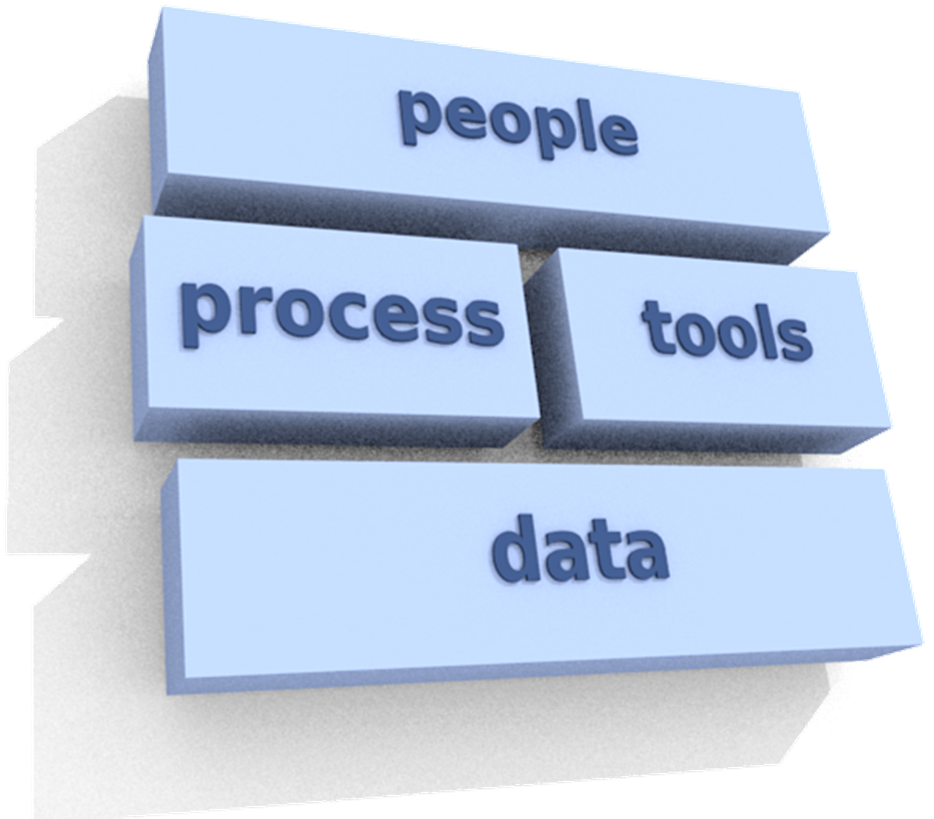
| Home | FAQs | Book Contents | Updates & News | Downloads |
Long ago, in the days when the iceberg slide was still innovative, we used to talk about the balance between people, process and technology, but by at least 2006 it had become apparent that needed to add data to that trio♮. At the time when we were assessing information landscapes in oil companies we would regularly ask users to judge the fitness of their tools, available data, fellow experts and defined processes. By 2006 we could see a clear pattern in the responses obtained from geoscientists in a wide range of different oil companies. Tools were widely perceived to be "good enough", the business processes were either not adequate or completely absent, and the rating for people and data was between those two. In the years since then my impression is that users have not significantly changed that perception.

There are a number of different approaches that can be employed to estimate the value that data has for E&P activities, one of the best ones is the "strategic model", the advantages and drawbacks of this approach I have covered in these articles before, so I won't bore you by repeating that. When I run workshops about the value of technical data I usually ask the participants to assign priorities to "people", "process", "tools" and "data". The initial response is always the same, everybody is initially reluctant to assign numbers saying that these components are so closely bound together that they cannot truly be considered separately (in the past I've called that the "value of paella issue"). This is a fair criticism, but I always keep pushing until the participants give me some numbers. Usually we get a mix of values, some emphasise the experience level of the people, while others say the data drives success, but every time that I have done this exercise with more than 4 participants the average values have turned out similar. The scores for data and people are about equal, while the combination of process and tools makes up the other third.
This ratio can be then the kernel for a range of conversations, for example: if payroll and HR covers the people, IT covers the tools, EA covers the processes and DM covers the data what are the relative budgets for these four groups?; think of a recent business decision that turned out to be wrong, which of these was the underlying cause that made that mistake happen?; which of these is easiest to improve?; which of them would have the greatest long term benefit?
I'm sure we've all been aware that these four elements underpin all E&P activities for more than a decade, but no one thinks they are equally important, we should be building on that. Next time you need to present these four maybe you should make them different sizes?
♮ To see this switch contrast slide 27 of my 2003 SMi presentation (the original of which came from Najib Abusalbi but he may have copied it from someone else) with page 7 of my 2006 PNEC paper.
Article 62 |
Articles |
RSS Feed |
Updates |
Intro |
Book Contents |
All Figures |
Refs |
Downloads |
Links |
Purchase |
Contact Us |
Article 64 |